Launching a new product on Amazon successfully is challenging, especially in today’s uncertain market. According to Marketplace Pulse, Amazon has around 6.3 million total sellers, with over 2 million active sellers last year.
Thousands of products are launched every day, leading to fierce competition. Surviving in such a competitive market with changing trends and dynamics requires strategy and adapting. A successful launch also requires a process. It is not always a matter of listing your product, but how you launch and persistently market the product.
If you are new to selling or have already been selling on Amazon FBA, you will find out what strategies will work for a successful Amazon product launch.
Product Research
The first step is evaluating the product, the target market, and the competitors. It is crucial to do product research and validate the product before launching one.
Product research means analyzing the fundamentals of the product such as market demand, profitability, suppliers, delivery, and the target audience. No matter what type of seller you are, private label, dropshipping, or retail arbitrage, product research validates the chances of the product being a success.
Even the most advanced sellers understand the importance of product research and spend time, money, and resources in identifying one. Here are some important aspects to focus on when doing a product research
Determine Cost & Profit
Price factors heavily into Amazon product ranking and in some cases, winning the buy box. While you don’t always want to be the cheapest retailer, you should provide the highest value in the product to still earn profits.
Determining your competitors’ prices and identifying potential ACoS can be a good start to understanding if the product will be profitable in the future. However, there are various pricing strategies to execute depending on the product type.
You can start to determine your pricing by understanding your manufacturing and sourcing cost.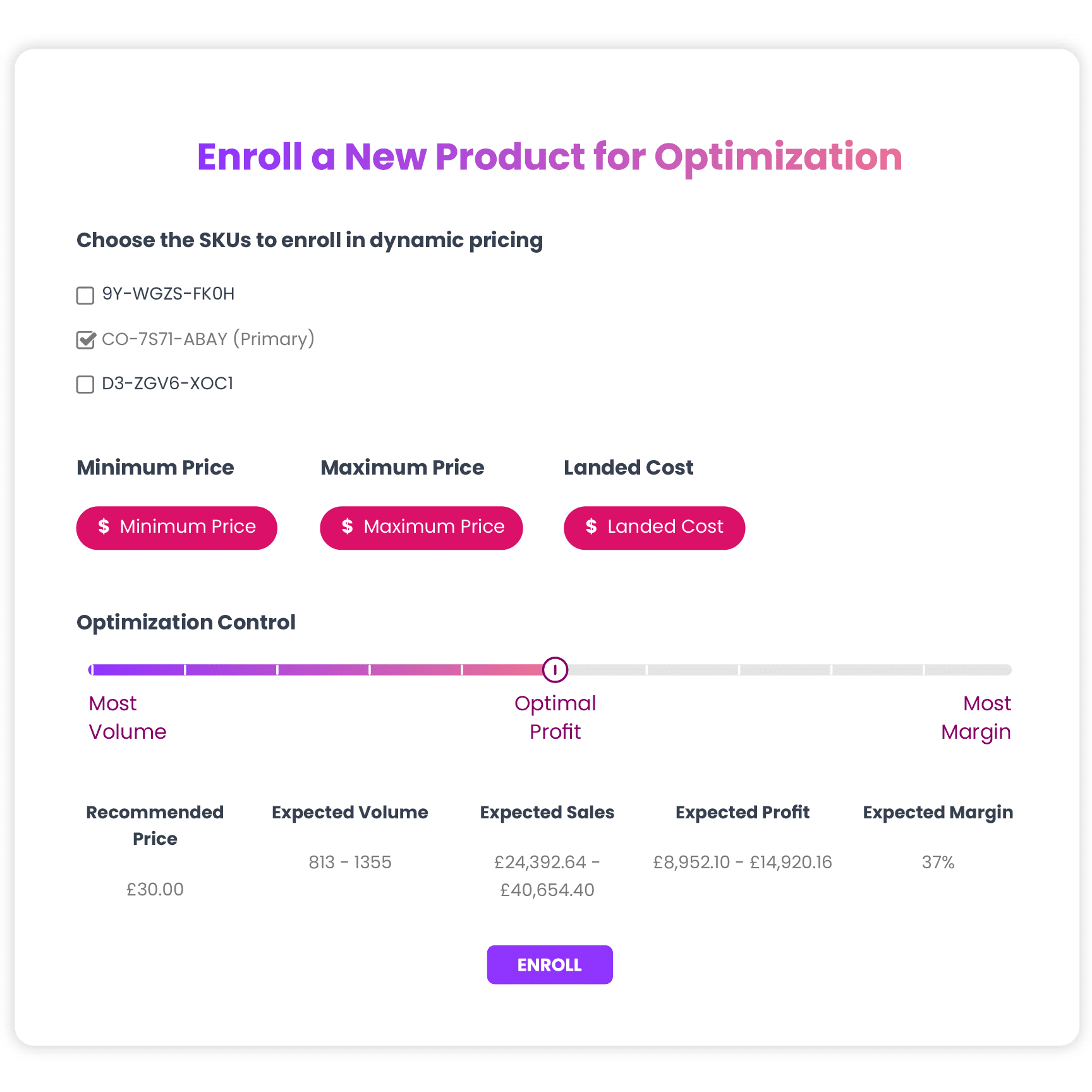
Product Sourcing
Product sourcing and related supplier logistics have also become a huge factor since the pandemic. Sometimes access to the best supplier with a high-quality product can be the key differentiator for a successful product launch.
Some common methods of sourcing products for Amazon include Alibaba.com, dropshipping, auctions, online arbitrage, and various marketplaces.
However, if you already working with suppliers and manufacturers, or selling in a particular category, you can utilize the relationship to create more creative products to stand out from the competition.
If you sell trending products, then your research phase needs to be quicker to get ahead of the market. The top-selling categories on Amazon are dynamic and will change with the seasons and trends.
You can get more ideas for your new products or existing ones through keyword research.
Keyword Research
Using keywords that resonate with your products is essential to increase your ranking and sales on Amazon. You can use keyword research tools to search specific keywords you want.
Usually, there are two goals of keyword research; understanding the competition and the volume of searches. By using both, you can understand if the keyword is too saturated. Try our listing analyzer to see what keywords you should be using.
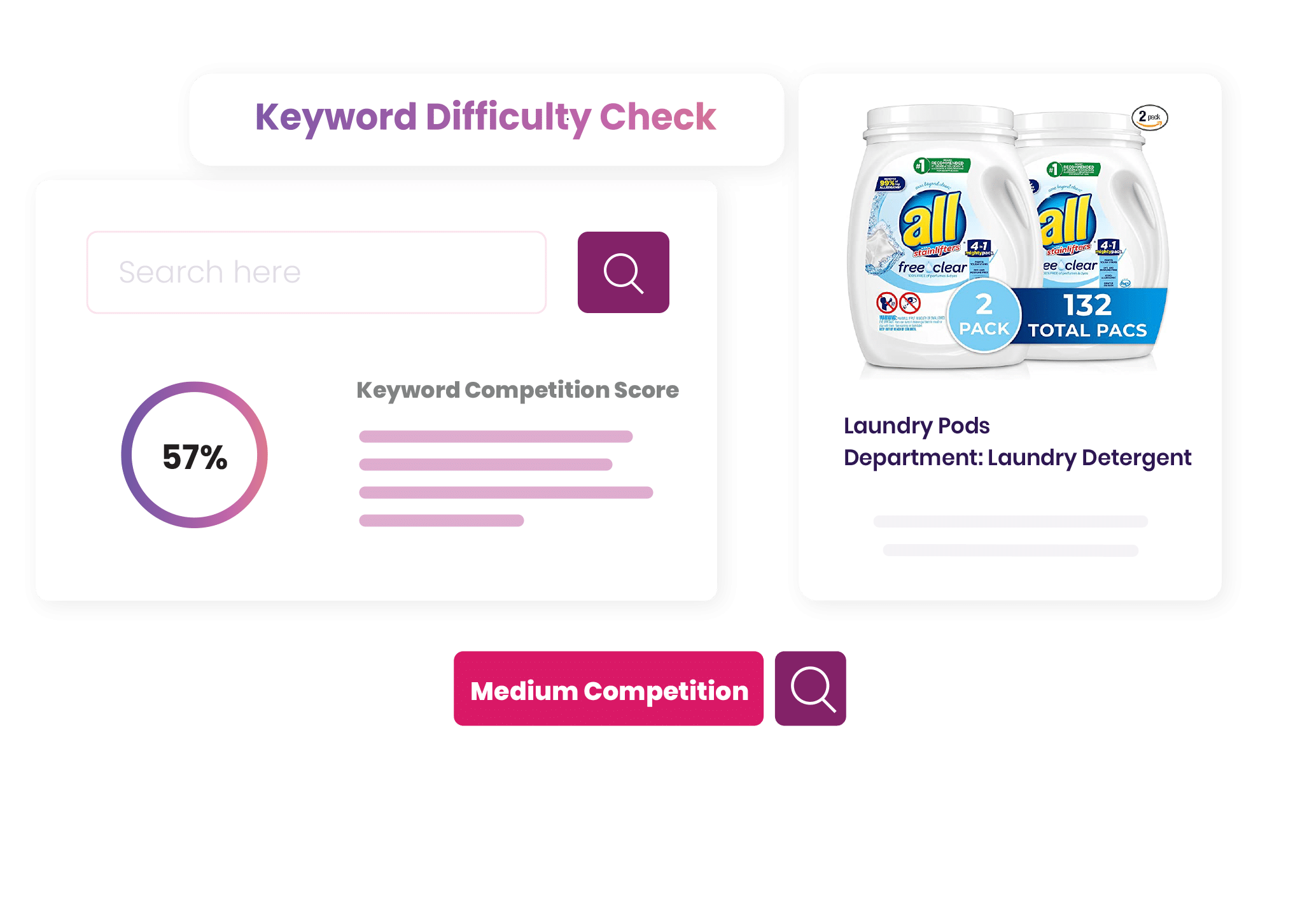
Content Optimization
Once you know what products and keywords to focus on, you can start your product listing which includes the SEO factors, A+ Content, and the brand story.
SEO: Title, Bullets, and Description
The SEO component may not necessarily help with the initial launch, but an optimized product listing sets up the product for long-term success and better organic ranking.
The product name or title is a critical measure of relevance for Amazon and search engines. It should match the physical packaging of the product and grab customers’ attention. Check the Amazon product title requirements and follow the criteria to avoid missing out on the best practices that can lead to search suppressions.
Bullet points also contribute to the visibility of the product. Use your keywords in the bullet points to improve the chances of ranking higher.
Additionally, descriptions should have detailed information about the features and usage to enable customers to identify, evaluate, and purchase the products. It is here that you should highlight the specific product information that does not appear anywhere in the listing.
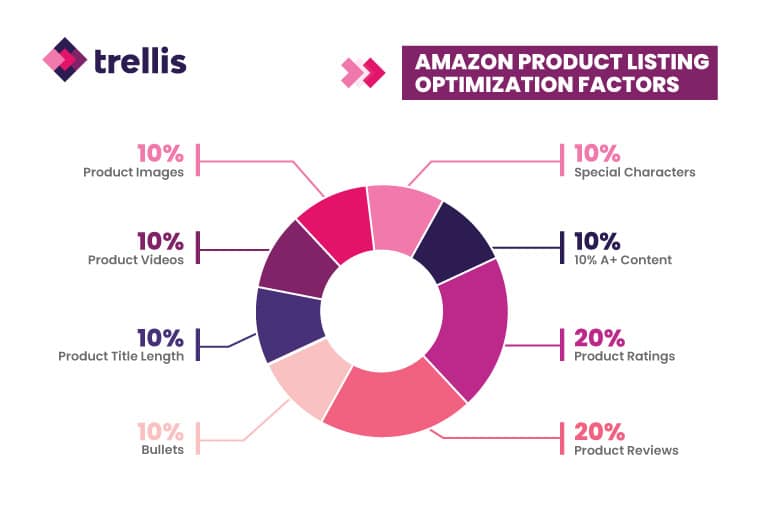
Product Images + Video
Adding images and videos of your product in your listing improves your customer experience and will surely increase the overall conversion rate. Images and videos allow you to display information in a more visual way. The customers will discover the benefits and features faster and more interactively. For videos, you can add a compelling call to action at the end to encourage the viewer’s purchase after completing the Video.
Try out Trellis’ built-in video maker and create product videos within minutes.
A+ Content
Using Amazon A+ Content (formerly Enhanced Brand Content) is the perk sellers enjoy after signing up for the Amazon Brand Registry. It enables you to tell your brand story with enhanced images, product comparisons, infographics, and more visual ways to display features and benefits.
A+ Content can increase your conversion rate anywhere from 10% to 200%.
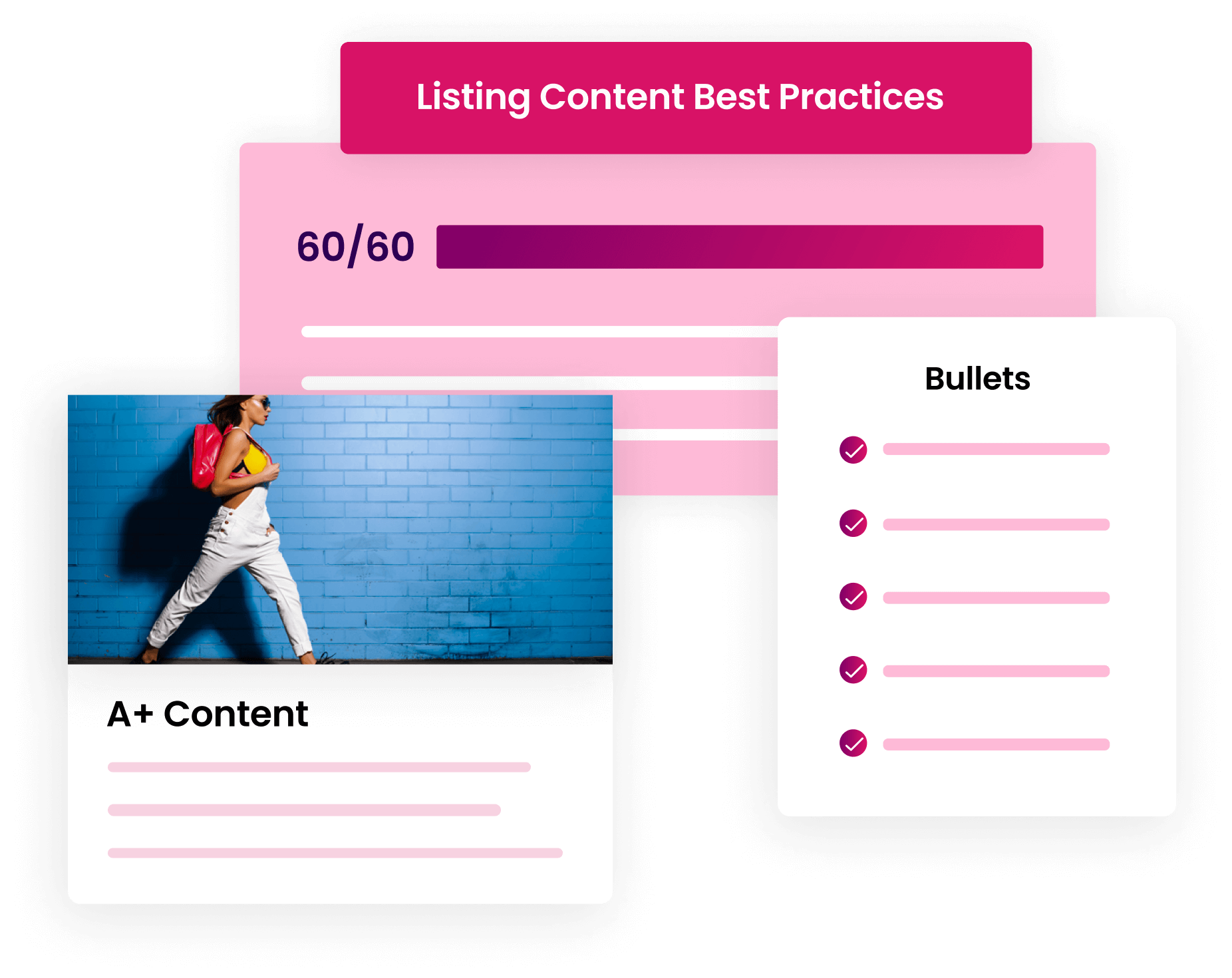
Marketing
Once you have an SEO-optimized product listing with A+ Content, marketing becomes more cost-effective. Especially when you use the right marketing strategies.
Some of these strategies include:
Promotions
Instead of sitting and waiting you can launch your product with the Amazon Promotions feature to push your products, increase reviews, and generate early sales. This includes the use of coupons, deals, discounts, and more.
Promotions can be especially effective in combination with Amazon advertising.

PPC
Amazon Ads can boost your product visibility, get quick traffic, and help you rank higher organically. Improving your ranking takes time but sending traffic to products speeds up that process by helping Amazon see the value your product brings to its customers.
Even if you have a newly launched brand, optimizing campaigns for an Amazon PPC launch strategy is the best bet to ensure both product and brand visibility. If you don’t know how to create Amazon Ad campaigns manually, then try auto-campaigns. They can help you create campaigns quickly using bidding strategies and top-performing keywords.
If you are a more advanced seller that wants to take market share away from your competitors you may want to automate your Amazon PPC.

Read more: 10 Amazon PPC Campaign Strategies
Social Buzz
Outside the Amazon ecosystem, social media is another great tool to promote your Amazon products. Consumers constantly share information, reviews, ideas, and questions about eCommerce products looking for social proof.
To create a buzz about your product, you can use social media influencers to send traffic to your products. Amazon also offers an Amazon affiliate program to motivate influencers to make a percentage on every product sale.
Analyze
The Amazon product launch strategy does not stop after promoting your product. The ranking doesn’t hold forever, and your traffic stream from other channels will drop with time. It is best to continue analyzing your product performance to keep taking steps toward making sales and growing the business.
A/B Testing
After launching the product and all the marketing campaigns, your click-through rate and conversion rate can help you identify what to improve on.
Through A/B testing, you can check what target keywords and ASINs performed well. Advertising automation can help you analyze and optimize campaigns faster. Whereas for the overall listing, you can evaluate the title, main image, and pricing through click-through rate. As you improve the appeal of your listing you can increase your conversion rate by adjusting your A+Content and increasing reviews.
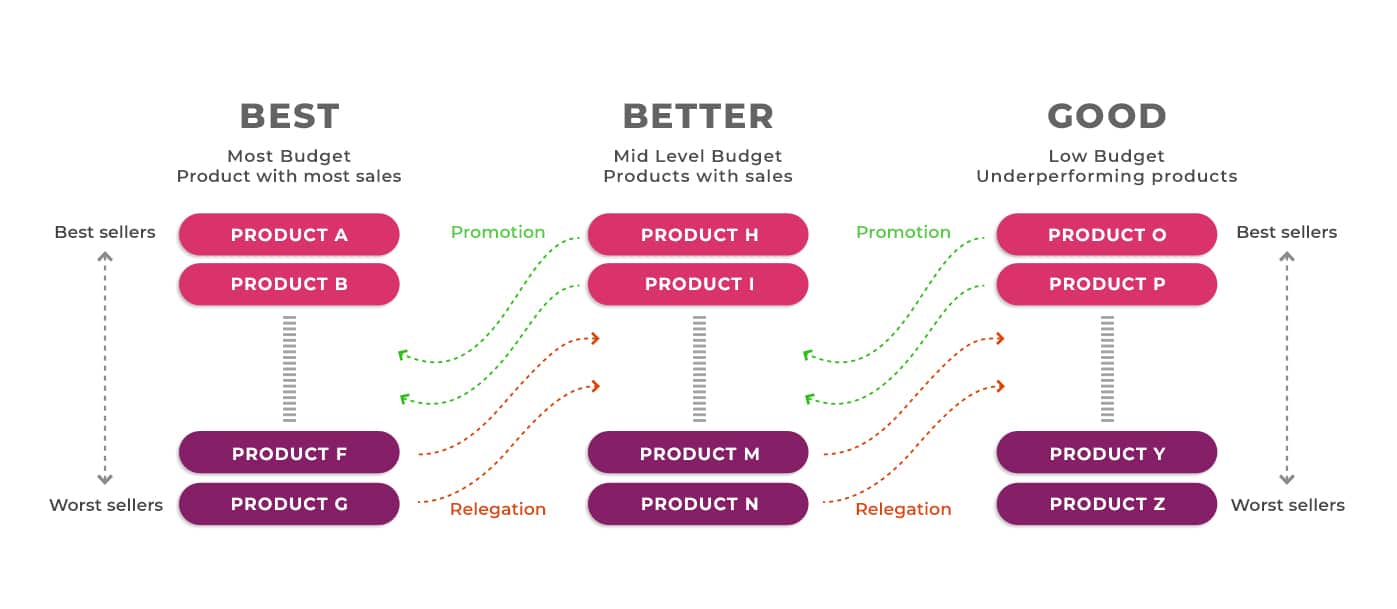
Reviews
Making sales is not enough when selling on Amazon. You need to make sure to collect reviews along the way. More positive reviews will potentially increase the conversion rate giving consumers a sense of trust.
If you get negative reviews, make sure you acknowledge and accommodate them with better customer service. Poor reviews can also help you understand the areas you need to improve upon. Therefore, striving for positive product listing is going to be an ongoing journey.
Consequently, better reviews can help you with a more cost-effective PPC campaign and likely do better than one with fewer positive reviews.
Inventory
Managing inventory and analyzing sales velocity is something many sellers struggle with, especially after the pandemic and uncertain supply chains. Always estimate your sales and prepare to restock your inventory ahead of time to avoid delays.
While it is common to feel tempted to wait until the last minute, you risk running out of inventory before replenishing. Effective inventory management can help mitigate the risk of running out of stock and negatively impact your product rankings and sales.
If you want to maximize your profits while on low inventory, learn how Dynamic Pricing works.
Wrapping Up
All the above steps in the Amazon product launch guide should help you launch successfully, rank higher, and generate more sales.
- Thorough product research will save you money in launching the right product.
- A well-optimized product listing will convert traffic better and set it up for long-term success.
- Marketing products through various channels can send relevant traffic with purchase intent.
- And, analyzing the results through testing and optimizing can make the product launch a continued success.
For products that you have already successfully launched try growing them with the Amazon Flywheel.
If you want to launch your product using automation, Trellis can help you create Amazon Ad campaigns and optimize for growth.
Book a demo with us today to get started.



